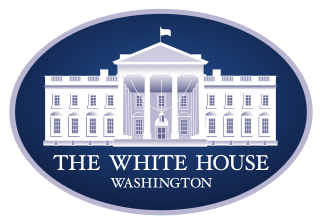Trade Cases

Price on trade: A lot happened last week - and it wasn't all about tariffs
Written by Alan Price & Ted Brackemyre
April 13, 2025
Should foreign investment be allowed to reshape the American steel Industry?
Not to be lost in the recent on-again-off-again tariff frenzy, Nippon Steel’s proposed takeover of U.S. Steel has also found itself in President Trump’s crosshairs when it comes to trade and industrial policy.
Nippon Steel initially announced its nearly $15-billion bid for U.S. Steel in December 2023. The deal subsequently faced opposition across the political spectrum in the runup to the 2024 presidential election, including from President Trump. Ultimately, President Biden blocked the merger on national security grounds in January 2025.
After President Trump retook office, market participants and outside experts speculated that he had warmed to the idea of the deal. Then followed a massive lobbying blitz from U.S. Steel and Nippon Steel. Just last week, the Wall Street Journal and the Washington Post each ran pro-merger op-eds. That’s something these Washington observers have never seen. And it’s a truly impressive press and public relations coincidence!
What happened next? The president directed the Committee on Foreign Investment in the United States (CFIUS) to take a fresh look at the proposed merger. However, President Trump has since clarified his views. He said he does not want to see U.S. Steel “go to Japan.”
President Trump has further noted that he would prefer to see Nippon Steel as an investor in U.S. Steel, rather than as an owner. He even questioned why U.S. Steel would need a deal in light of recently imposed tariffs.
The exact parameters of President Trump’s thinking are unknown. But the president’s willingness to re-open the CFIUS process raises important questions regarding American national security and the structure of the domestic steel industry. The Trump administration may see striking deals with Nippon Steel or other foreign steel companies to invest in the United States as big wins and a sign that their trade policies are working.
As we have noted previously, Hyundai has already announced a $21-billion investment in US production. The investment includes building a $5.8 billion EAF steel mill in Louisiana. And, according to the Korean press, the largest Korean steel producer – POSCO – is considering investments in US operations. Depending on how these investments and any corresponding deals are designed, they could fundamentally change the structure of the American steel industry.
Notably, the steel producers and countries seeking to invest in American steel production are many of the same countries that have long plagued the US and other steel markets with their excess capacity. For instance, the Japanese and Korean steel industries have been shipping dumped and subsidized steel around the world for years.
The United States alone maintains 46 antidumping and countervailing duty orders on Japanese and Korean steel products. And just this past week, the European Union announced a provisional antidumping duty rate of 42.5% for Nippon Steel on the company’s exports of hot-rolled coil. Encouraging the same companies that exploit their closed home markets and compete unfairly abroad to then buy into the US market seems like an unfitting reward.
Creative destruction and re-structuring in the steel industry can be a good thing. And we are certainly not advocating for non-market capacity to be kept alive longer than economically justifiable. But shaking up the structure of the American steel industry is not necessarily good. This is particularly true if it is driven by large foreign companies that are fueled with massive government support and that profit from dumping heavily in global markets.
For example, a lot of the investments being proposed appear to be focused on automotive steel production. What would this structural shift mean for the largest automotive steel producer in the US? It is not clear to us whether these changes would be beneficial to those parts of the US industrial base. These are the types of national security questions that the Trump administration is going to have to grapple with going forward.
Global excess steel capacity rising, here is a creative solution
Ahead of the recent Organization for Economic Cooperation and Development (OCED) Steel Committee meetings in Brussels, the OECD reported excess steel capacity worldwide rising more than 7% from 565 million metric tons in 2023 to 605 million metric tons in 2024. And overcapacity is expected to increase even further, up to 721 million metric tons by the end of 2027.
The continued rise of excess steel capacity shows the need for serious actions and potentially creative solutions. In fact, according to one presentation at the OECD, China alone has more than 200 million metric tons of excess capacity in 2025. And this will increase to 325 million metric tons by 2030. The presentation further explained how the Chinese industry is operating with near zero profit margins and record exports that substantially exceed US production.
But China is far from the only country with excess steel capacity. Steel is produced in almost 100 countries, making it difficult to control overcapacity worldwide. The global trade of blast-furnace grade iron ore, though, is concentrated in only four countries: Australia, Brazil, Iran, and new Chinese-controlled capacity in Guinea that is about to start up.
The simplest solution may be for the two largest iron-ore producing countries to reduce their shipments by several hundred million tons. Specifically, commitments to reduce iron ore exports to China and its Asian investments may be the only realistic solution for right-sizing global steel capacity. Australia and Brazil – as the two largest global exporters of iron ore – should commit to reducing their iron ore shipments to countries with significant excess steel capacity. This would help curb Chinese capacity as well as the overproduction of goods containing Chinese steel and Chinese-driven overcapacity in other markets, such as Indonesia.
If Australia and Brazil are serious about reducing excess steel capacity around the world, why are they continuing to feed the biggest perpetuator of the problem with the raw materials it needs to continue doing so? Asking Australia and Brazil to limit iron ore shipments to China is not without economic consequences for the Australian and Brazilian iron ore industries. However, the economic effects are identical to reducing these volumes at the steel production phase. And given the inability of the global community to address steel overcapacity across multiple decades, out-of-the-box ideas like this may need to be part of the solution.
The quiet death of President Biden’s hydrogen steelmaking dream
One the crown jewels of the Biden administration’s industrial decarbonization program was $1 billion in grants awarded for two hydrogen-based steelmaking projects. In March 2024, the administration preliminarily awarded $500 million to Swedish steelmaker SSAB for a hydrogen-based steel production facility using DRI in Mississippi as well as $500 million to Cleveland-Cliffs for a hydrogen-ready DRI and electric smelting facility in Ohio. As of this past week, both projects have been withdrawn from federal funding. Late last year, SSAB quietly withdrew from the federal award negotiations. And earlier this week, the Cleveland-Cliffs project appears to have been slated for termination as part of DOGE-related funding cuts.
Whether either of these projects continue to move forward – with or without federal funding – remains unclear. However, the Biden-era push for hydrogen-based steelmaking appears to have been little more than a false start. Driven in part by high operating costs, many of the hydrogen-based projects in Europe have been similarly withdrawn or delayed. Hydrogen may still play a role in the decarbonization of the steel industry. But the hydrogen pipe dream that we have discussed previously appears to be drying up for now.
The UK intervenes to prevent the closure of obsolete steelmaking capacity
As we write this article, the British government is scrambling to save the Chinese-owned steel mills operating in the UK under the name of British Steel.
Within the industry, British Steel’s steelmaking facilities have been recognized as obsolete and non-viable for many years. A small portion of their production goes to the British railway system. Most of it is unneeded domestically and is ultimately dumped on world markets at a loss (e.g., structural shapes, wire rod, and beams).
Nevertheless, the British government is in the midst of nationalizing the company with a £600 million ($785 billion) bailout. That money would keep the company operating while the government seeks a company foolish enough to invest £2 billion to build new EAF facilities.
If this plan made sense, it would have happened already. EAF furnaces have been widely used in the United States to make the same products for more than 30 years. And if the market could not finance this type of investment over the past three decades, then British Steel appears to be a textbook example of keeping alive obsolete and excess capacity that should be allowed to shut down.
Will the British government allow that to happen? Apparently not. Meanwhile, the UK government is blaming Chinese overcapacity and even US tariff policy to justify a bailout of this moribund capacity. The reality is that it would be cheaper and better for the UK if it let British Steel shut. This could open the door for an investor to build modern, efficient, and properly sized micro-mills to meet internal demand. Doing so would come with a fraction of the operating cost and a quarter to a third of the workforce.
We’ll have more on tariffs next time
After a break from discussing tariffs this week, we plan to resume our tariff commentary in our next piece. As the Trump administration’s tariff policies continues to evolve, there will certainly be more developments to follow in the coming weeks.
Editor’s note
This is an opinion column. The views in this article are those of an experienced trade attorney on issues of relevance to the current steel market. They do not necessarily reflect those of SMU. We welcome you to share your thoughts as well at info@steelmarketupdate.com.

Alan Price
Read more from Alan Price
Ted Brackemyre
Read more from Ted BrackemyreLatest in Trade Cases

Trump signs executive order aimed at making US shipbuilding ‘great again’
President Trump on Wednesday signed an executive order meant to breathe new life into American shipbuilding and curb Chinese dominance in the sector.

Trump still against selling USS to Japanese firm: Report
Despite ordering a new review of Nippon Steel’s bid for U.S. Steel, President Trump said he is still against selling USS to a Japanese company, according to media reports.

CRU: ‘Liberation Day’ brings sweeping US tariffs
For trading partners, the tariffs will reduce demand for exports and depress growth. Over the coming days, trade partners will almost certainly announce retaliation, which will hit US exports.

Leibowitz: The blowback from Trump’s ‘Liberation Day’ tariffs has only just begun
Tariffs are taxes that the government collects. Funds are disbursed by acts of Congress. If domestic companies, including manufacturers, are to benefit from “protective” tariffs, they must raise their prices as well. Maybe not by the entire amount of the tariffs, but by some. Inflation will come.
